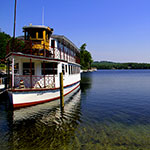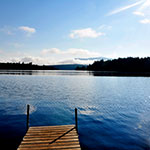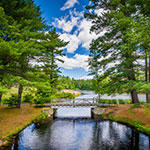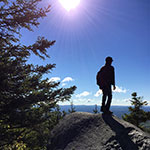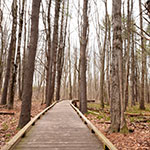
Covered bridges are a favorite among New England visitors and photographers, from kids to senior citizens. The affection that many visitors acquire for New England’s covered bridges often begins behind a camera. These small gems of 19th-century ingenuity are fun to photograph as weather and the changing seasons costume them with icicles, snow caps, and brilliant fall foliage.
Get the full flavor of a covered bridge tour by tucking away for a night or two at a historic hotel or inn or a
cozy cabin or cottage.
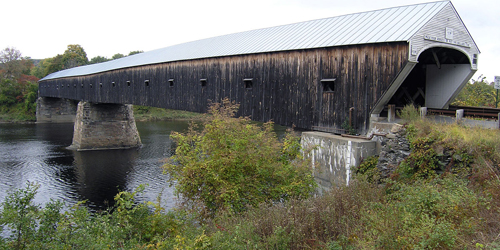
Crosses the Connecticut River between Bridge Street, Windsor, VT, and NH Route 12A, Cornish, NH Windsor, VT, 05089 Phone:
Location: 0.3 miles south of the junction of Route 44 at Windsor on US5 then 0.2 miles left.
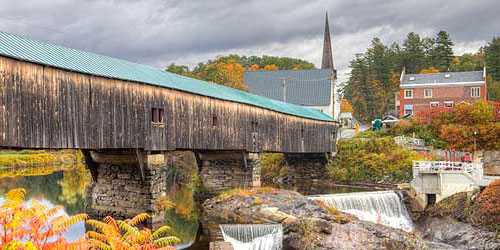
Pettyboro Road Bath, NH, 03740 Phone:
Location: West of U.S. Route 302 over the Ammonoosuc River
Old Cheshire Turnpike Langdone, NH, 03603 Phone:
Location: One-half mile south of N.H. Route 12A
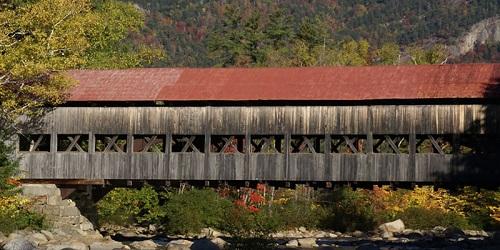
Passaconaway Road Albany, NH, 03818 Phone:
Location: Just north of the Kancamagus Highway, six miles west of N.H. Route 16
Riverside Drive Lebanon, NH, 03766 Phone:
Location: On Riverside Drive in Lebanon
Carleton Road Swanzey, NH, 03446 Phone:
Location: On Route 32, 4.5 miles south of the junction of Route 12 southeast of Keene; then left 0.3 miles
Location: East of Chandler Station and west of N.H. Route 103 on the Concord and Claremont Railroad line spanning the Sugar River.
Old Westport Road Winchester, NH, 03470 Phone:
Location: West of N.H. Route 10, one-half mile southwest of Westport Village
Blair Road Campton, NH, 03223 Phone:
Location: East of U.S. Route 3, two miles north of Livermore Falls
Colby Hill Road Plainfield, NH, 03781 Phone:
Location: 1 mile northwest of Route 120 in Meriden Village
Bradford Center Road Bradford, NH, 03221 Phone:
Location: One quarter mile north of the intersection of N.H. Routes 103 and 114
River Road Lyme, NH, 03768 Phone:
Location: One mile south of N.H. Route 10, two miles south of Orford Village
Joppa Road Warner, NH, 03278 Phone:
Location: South of N.H. Route 103 on Joppa Road
Location: North of N.H. Route 123A, two miles north of Alstead Village
Valley Road Bath, NH, 03740 Phone:
Location: North of N.H. Route 112 over the Wild Ammonoosuc River
Mill Road Cornish, NH, 03745 Phone:
Location: South of Route 12A, 1.5 miles southwest of Plainfield Village
Location: Two miles south of N.H. Route 103 and one-half mile west of Chandler Station in Newport
Location: One-half mile north of N.H. Route 16 at Conway Village
Old Stephan's Road Campton, NH, 03223 Phone:
Location: The bridge can be reached by driving into the campground just east of U.S. Route 3 and north of N.H. Route 49.
Main Street at Pinkham Notch Road Jackson, NH, 03846 Phone:
Location: From the intersection of Routes 16 and 16A, travel east on Route 16A
New Market Road Warner, NH, 03278 Phone:
Location: South of N.H. Route 103, two miles west of Warner Village
Location: East of U.S. Route 3 in Clark's Trading Post on Clark's Short Steam Railroad
Location: in the Flume Gorge, Franconia Notch State Park
Durgin Road Sandwich, NH, 03227 Phone:
Location: One and one-half miles north of N.H. Route 113, east of North Sandwich Village
Sawyers Crossing Road Swanzey, NH, 03446 Phone:
Location: One mile north of N.H. Route 32 near the site of an old Indian community
Hill-Danforth Road Pittsburg, NH Phone:
Location: Six miles north of Pittsburg Village on Hill Road over Perry Stream.
Location: East of N.H. Route 103 in Contoocook Village
Location: At the junction of N.H. Route 11 and N.H. Route 4A
Town House Road Cornish, NH, 03745 Phone:
Location: 2 miles east of Route 12A
Location: South of N.H. Route 9 in Henniker Village spanning the Contoocook River
Main Street Road West Swanzey, NH, 03469 Phone:
Location: East of N.H. Route 10
North Road Stark Village, NH Phone:
Location: Northwest of N.H. Route 110 on North Road in Stark Village over the Upper Ammonoosuc River.
Bump Road Campton, NH, 03223 Phone:
Location: One mile east of N.H. Route 175 at Campton Hollow
East Side Street Conway, NH, 03818 Phone:
Location: 0.4 miles north of the junction routes 16 and 153 on east side of road. In Conway Village go north on Washington Street and turn right at the fork; this is East Side Road.
Bolton Road Winchester, NH, 03470 Phone:
Location: South of N.H. Route 119 in the Upper Village of Ashuelot
River Street Ashland, NH, 03217 Phone:
Location: On River Street, spanning the Squam River
Location: One-half mile east of Franklin Falls and south of U.S. Route 3
Location: West of N.H. Route 16 at West Ossipee Village on old N.H. Route 125
Root Hill Road Cornish, NH, 03745 Phone:
Location: 1.0 mile east of Route 12A on Root Hill Road
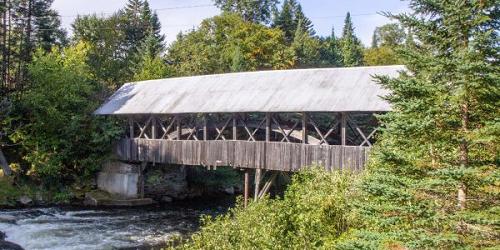
Bacon Road Pittsburg, NH Phone:
Location: South of U.S. Route 3, west of Pittsburg Village on Bacon Road over the Connecticut River
River Road Pittsburg, NH Phone:
Location: Seven miles north of Pittsburg Village on the road to Lake Francis State Park. It spans Perry Stream.
Clement Hill Road West Hopkinton, NH, 03229 Phone:
Location: North of N.H. Route 127 on Clement Road
Lorden Road Andover, NH, 03216 Phone:
Location: South of U.S. Route 4, one mile west of Andover Village
route 135 Bath and Haverhill, NH, 03740 Phone:
Location: One-quarter mile north of U.S. Route 302 in Woodsville Village
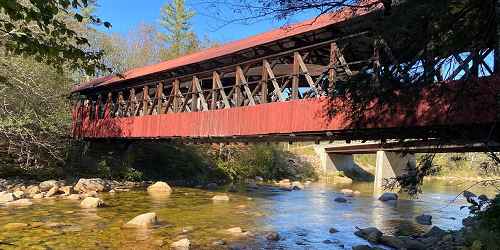
Near Route 302 Bartlett (Intervale), NH, 03812 Phone:
Location: West on U.S. Route 302, four and one-half miles east of Bartlett Village
For special offers and great New England travel tips subscribe today.
